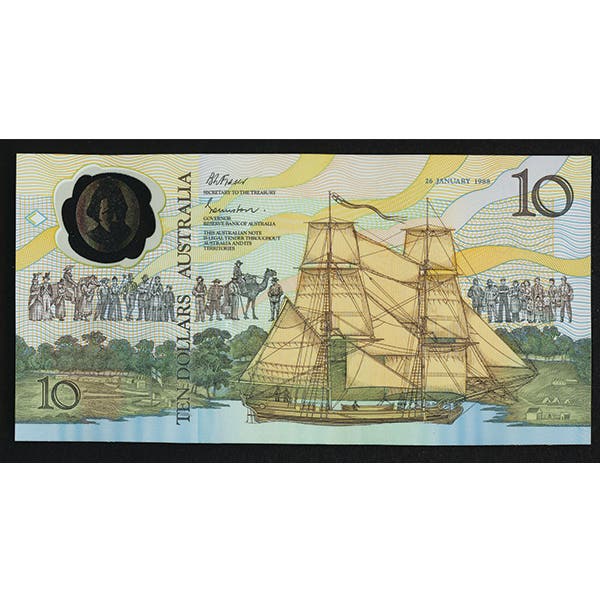Raw Coin Purchases Come with Risk
By Paul Malone In the May 3 issue of Numismatic News, Richard Giedroyc’s Coin Clinic (Page 7) opened the door to a subject that I’ve long wanted to broach but…
By Paul Malone
In the May 3 issue of Numismatic News, Richard Giedroyc’s Coin Clinic (Page 7) opened the door to a subject that I’ve long wanted to broach but lacked the guts to do so for fear of how it might be received.
The Professional Numismatists Guild (PNG) has reminded us on many occasions that, “If you don’t know what you’re doing, you’d better know your dealer.” This is excellent advice if one is buying bullion but of little value when it comes to raw, higher-end numismatics ($100 or more).
Twenty years ago, my doctor and dentist were both older than me. My doctor retired 10 years ago, and my dentist died five years ago. I’m now in the hands of medical professionals who are half my age. All of us are subject to aging, and I can promise all of you that your trusted coin dealer will either retire or “drop in the harness.” Their trustworthiness won’t matter if they’re not here to repurchase the raw coins they sold to you. If your dealer’s still plugging along but you die, then your heirs probably won’t know who to sell them to. They will most likely be at the mercy of dealers they don’t know, and they’re going to hear, “This coin has been cleaned,” or “This coin is corroded,” or “This coin has been altered,” or, worse, “This coin is counterfeit.” Your $50,000 collection is now a $20,000 collection.
Ten years ago, I decided to “slab up” my Indian cents. Of the 59 coins in my collection, 15(!) of them received “Details” grades. My early Lincolns (1909-1933) fared little better. Of the 69 coins in the set, 15 (again) received “Details” grades. Corrosion and cleaning were the primary culprits. Even with a 10-power glass, I couldn’t see any corrosion. Apparently, we need to carry stereo microscopes with us. Assembling a problem-free set of anything is, I believe, more difficult than one might think.
I embarked on a quest to replace my “problem” coins. Several years ago, I bought two of them from a dealer I’ve known for a long time. I told him that I intended to submit them to a third-party grading service (TPGS) and said, “I don’t expect them to grade the same way you do, but if either of these are returned with the word, ‘Details’ on the holder, will you offer me a refund or exchange?” He confidently agreed to do so. (In my opinion, apart from modern issues, the grade is the least important reason to have a coin certified). A coin I bought as an AU-55 was graded XF-45, and I was OK with that. The other coin, which he sold as an AU-50, was returned “XF-40 Details, Corroded.” He exchanged it for my purchase price.
Any dealer known to you, especially one with whom you’ve developed rapport, should offer the same guarantee, even if it requires a 60-day return privilege. Any dealer who wouldn’t do this either knows that the coin is problematic, or they understandably don’t want to take the risk of having a different coin returned to them. There are dishonest dealers and collectors.
In any event, Mr. Giedroyc’s advice is sound. It certainly can’t hurt to ask the seller, “Certification services have been around for more than 35 years. Why is this $400 coin still raw?” I’d love to be a fly on the wall for the answer (Hint: it isn’t “still raw,” it’s “raw again”).
The PNG, along with the Anti-Counterfeiting Educational Foundation, have warned us numerous times about the proliferation and acceleration of counterfeiting. We should take these warnings seriously. Words like “rampant” and “epidemic” come to mind, but counterfeiting is just one of the reasons for avoiding raw, expensive coins. Tampering and environmental damage can drastically reduce the value of your “little treasures.”
If enough collectors lose enough money, there’s always the risk that they will contact their representatives, who could enact laws aimed at protecting collectors from dishonest practices. This should be all the incentive we need to do a better job of policing ourselves. Our hobby doesn’t need more government intervention. The solution seems simple enough. Collectors should never buy raw, higher-end coins. There’s a reason why they’re raw. They should especially avoid eBay. A high percentage of these coins have been removed from their holders after receiving “Details” grades and resold on eBay as raw coins. They are then submitted to a TPGS by the next buyer and, again, returned with a “Details” grade, only to be sold for a fraction of their cost, removed from the holder and sold again. Most of these sellers offer only a 14-day return privilege, which is not enough time to have them certified, a process that usually requires more than 30 days. It’s also why these sellers will only guarantee authenticity (but only for 14 days), but will not guarantee that it hasn’t been tampered with or has sustained environmental damage.
It’s always seemed unfair to me that the onus is on the buyer to “beware,” while the seller has nothing to fear but a bad reputation (which he probably doesn’t care about). Until there’s a way to keep “Details” coins in their holders, this problem will never go away.
Every coin is unique. Someday, we’ll have the technology (not unlike facial recognition) to simply scan a coin and know its complete certification history (if it has such a history). Until then, I’m sorry to say, “Buyer beware.”
Paul Malone is a collector from Forest Lake, Minn.
To have your opinion considered for Viewpoint, email submissions to numismatics@aimmedia.com.









